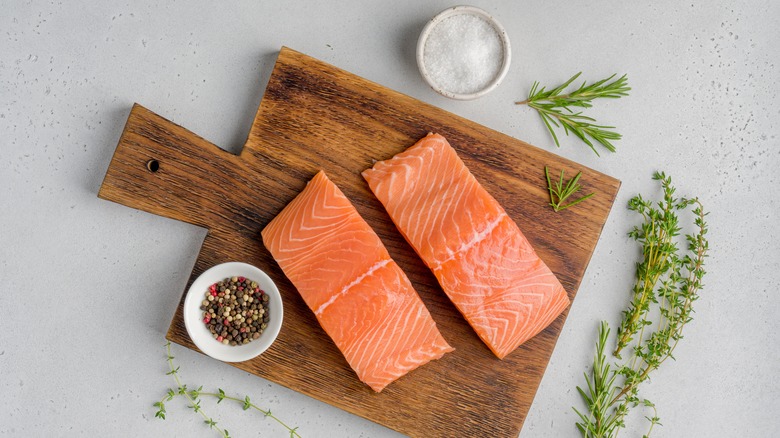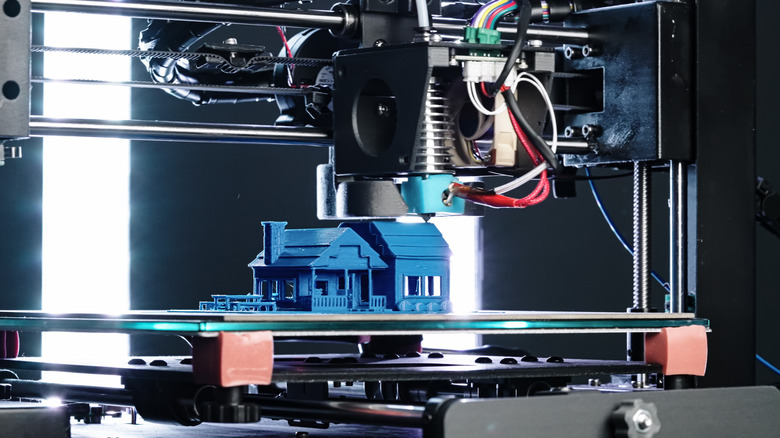Is 3D Printing The Future Of Sustainable Salmon?
According to National Geographic, Americans consume nearly 450,000 tons of salmon yearly. From sockeye to wild Pacific salmon and chinook to farmed Atlantic, salmon comes in a wide variety that should be protected. The Monterey Bay Aquarium Seafood Watch is a source for science-backed, sustainable seafood recommendations — but what good are shopping guides when, according to an Oceana study, up to 43% of salmon are mislabeled depending on the season?
When it comes to buying salmon in the U.S., Oceana says that one thing you can be sure of is that if it's Atlantic, it's farmed. However, if it's wild-caught Pacific, it's possible it's actually a lower-value salmon of unknown origin. That's because 70% of the wild salmon caught in U.S. waters is exported and processed overseas, where it enters the global seafood supply chain without any traceability. So even though U.S. fishermen have the means to satisfy 80% of the country's demand with what's considered some of the best salmon in the world, about two-thirds of what Americans consume is farmed — and that's bad news for our oceans.
One report from Just Economics shows the economic and environmental costs of salmon farming, including its contribution to the decline of marine life through disease and pollution. With the demand for fish at an all-time high (per 3D Natives), food startups are getting creative. Using 3D food printing technology, companies like Plantish, Legendary Vish, and Revo Foods are revolutionizing the sustainable future of fish — beginning with salmon.
The benefits of 3D printing fish
Typically, when you think of 3D printing, you think of plastic, resins, or metals. But, when applied to food, companies are able to use plant-based ingredients to replicate the full experience of eating meat and fish. Also called additive manufacturing, VegNews explains that the food is constructed layer by layer, allowing producers to build the extremely specific and complex tissue and fat structures found in salmon. In doing so, leading startups like Plantish, Legendary Vish, and Revo Foods are able to provide something previously unheard of: a whole salmon filet that can be fried, baked, and steamed like the real thing — without any of the environmentally irresponsible impacts of commercial farming or fishing involved (via The Climate Change Review).
Not only do the plant-based filets convince your eyes with their red-orange color and stripes of white fat (via The Spoon), but they also come with a surprisingly realistic taste and aroma — an important aspect missing from most plant-based fish products. By using pea proteins and algae extracts, the filets are complete with protein and omega-3 fatty acids that are comparable to conventional fish (via VegNews), without any risk of contamination by antibiotics, microplastics, or heavy metals, along with chemicals like polychlorinated biphenyls that Time reported are high among farmed salmon. So not only will vegans have a way to enjoy whole-cut salmon fillets when the products hit the market, but children and pregnant women will too.

